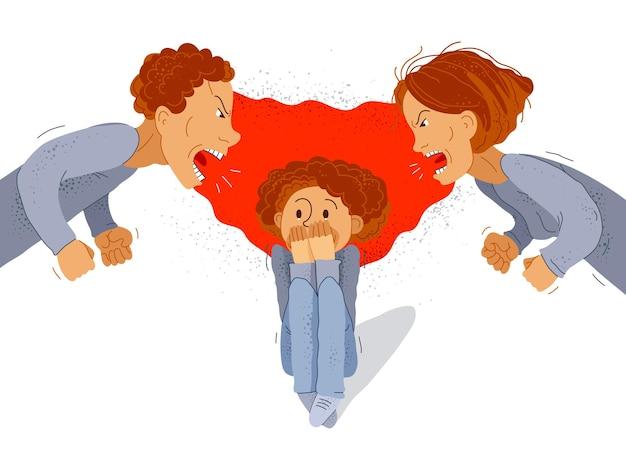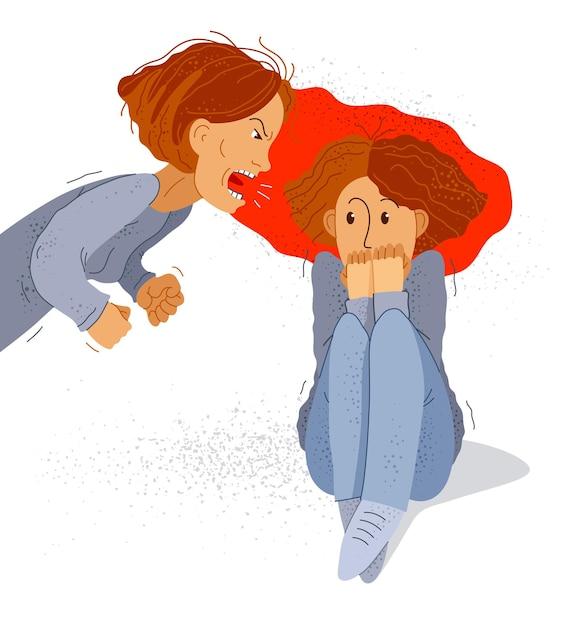It is not uncommon for children to express themselves through drawings. These drawings can provide valuable insights into their thoughts, emotions, and experiences. However, when a child starts to draw violent or disturbing images, it can be concerning for parents and caregivers. They might wonder what these drawings mean and if they should be worried about their child’s well-being.
In this blog post, we will explore the possible meanings behind a child’s violent drawings and delve into the psychology behind their artwork. We will also address questions like why psychologists ask children to draw and what certain elements in their drawings could reveal. Whether your child is drawing monsters, sad faces, or houses with no windows, we’ll provide you with information and strategies to help you understand their drawings and support them effectively. So, let’s dive into the fascinating world of children’s drawings and uncover what they are trying to communicate through their artwork!
What Does It Mean When A Child Draws Violent Pictures
Children express themselves through various forms of art, and drawing happens to be one of the most common ways they communicate. However, when a child starts drawing violent pictures, it can be a cause for concern for parents and caregivers. In this subsection, we will explore the possible meanings behind children drawing violent pictures and provide insights into understanding their behavior.
The Imagination Unleashed
Children’s Imagination: An Unpredictable Journey
Children have incredibly vivid imaginations that can transport them to fantastical worlds filled with superheroes, monsters, and action-packed adventures. It’s not uncommon for them to draw pictures depicting violence or aggressive scenes that reflect their inner worlds, where they are simply exploring their imagination and experimenting with different ideas and emotions.
A Natural Curiosity
Children are naturally curious beings, absorbing information from their surroundings like sponges. Exposure to violence, whether through media, video games, or real-life experiences, can influence their artistic expressions. Drawing violent pictures might be their way of processing and trying to make sense of the world around them, as they are still developing their understanding of societal norms and boundaries.
Emotional Expression and Release
Release of Pent-Up Emotions
Children, like adults, experience a wide range of emotions. Sometimes, they may struggle to effectively communicate or understand their emotions, leading to frustration or pent-up feelings. Drawing violent pictures can provide an outlet for them to release these strong emotions in a controlled, non-harmful manner. It allows them to express anger, fear, or anxiety, offering a form of emotional catharsis.
Coping Mechanisms
Drawing violent pictures can serve as a coping mechanism for children dealing with difficult situations or traumatic experiences. It may be their way of processing and coming to terms with their emotions, fears, or struggles. It can provide a sense of control and reassurance, allowing them to explore their feelings and find comfort in their artistic creations.
Seeking Attention or Influence
Attention-Seeking Behaviors
Some children may draw violent pictures as a means to draw attention to themselves. They might have noticed that their drawings elicit strong reactions from adults or peers, and due to their developmental stage, they might use this as an opportunity to seek attention or a desire to stand out. It’s crucial for caregivers to differentiate between genuine emotional expression and attention-seeking behaviors.
External Influences
Children are highly susceptible to external influences, including friends, siblings, or media. They may imitate what they see or hear, recreating violent scenes they are exposed to without fully understanding the consequences. It’s important to monitor their media consumption and engage in open conversations to help them differentiate between fiction and reality.
When Should You Be Concerned
While it is normal for children to occasionally draw violent pictures, there are instances where it could indicate deeper concerns. If the violent drawings become excessively frequent, disturbingly graphic, or are accompanied by concerning behavioral changes, it is essential to seek professional guidance from a pediatrician, therapist, or child psychologist.
Remember, as parents and caregivers, it is crucial to create a safe and supportive environment where children feel comfortable openly discussing their thoughts, feelings, and creative expressions. Encouraging non-violent forms of artistic expression, such as storytelling or creating imaginative worlds, can also help redirect their energy and encourage positive outlets for their emotions.
“FAQ: What Does It Mean When A Child Draws Violent Pictures”
When it comes to children’s drawings, it’s no secret that they can be quite imaginative and, at times, surprising. From the adorable stick figure drawings to the more complex scenes, children often express their thoughts, emotions, and experiences through their art. However, what does it mean when a child draws violent pictures? In this FAQ-style blog post, we’ll explore some common questions related to children’s drawings, psychology, and the deeper meanings behind their artistic creations.
What Does It Mean When a Child Draws Sad Faces
Children may draw sad faces for a variety of reasons. Drawing sad faces could be an expression of their own emotions or a reflection of something they have observed. It’s important to consider the context of the drawing and engage in meaningful conversations with the child to better understand their feelings.
What Do Drawings Mean in Psychology
Psychologists often utilize drawings as a form of expression and assessment. Drawings can provide valuable insights into a child’s mental and emotional well-being, helping psychologists identify potential issues, concerns, or strengths. It’s a way for children to communicate their thoughts and experiences non-verbally, allowing psychologists to gain a deeper understanding of their inner world.
How Should a 3-Year-Old Draw a Person
At the age of 3, a child’s drawings may still be in the early stages of development. It’s common for younger children to create simple stick figures without much detail. Don’t worry if the proportions are not accurate or if the drawing lacks intricate features. Encourage their creativity and keep in mind that their artistic skills will evolve over time.
Why Do Psychologists Ask You to Draw a Person
Drawing a person is often used as a projective technique in psychology. By asking individuals to draw a person, psychologists can gather insights into how they perceive themselves or others. It’s a way to access their inner thoughts, emotions, self-image, or even how they view relationships. It provides valuable clues that guide psychologists in their assessments and therapeutic interventions.
What Does it Mean if a Child Draws Upside Down
Children may sometimes draw upside down for various reasons, such as experimenting with different perspectives or simply finding it more enjoyable. It doesn’t necessarily have a hidden meaning related to their emotional well-being. Unless paired with other concerning behaviors, it’s typically deemed as a normal part of a child’s artistic exploration.
Why Does My Child Draw Monsters
The presence of monsters in a child’s drawings might initially raise concerns for parents. However, it’s important to recognize that creating monster-like figures is often an expression of their wild imagination rather than an indication of violent tendencies. Monsters can be representations of the unknown, fears, or even a creative outlet to explore fantastical elements. Embrace their imaginative spirit and encourage them to express themselves in a safe and constructive manner.
What Does a Child’s Self-Portrait Mean
A child’s self-portrait can reveal insights into their self-perception, body image, and emotions. It reflects how they view themselves in relation to others and provides a glimpse into their self-esteem. Paying attention to details such as facial expressions, body posture, or the presence of specific elements can help parents and psychologists better understand a child’s sense of identity.
Why Do Psychologists Ask You to Draw
Psychologists may ask individuals to draw as part of the therapeutic process or to unravel underlying emotions and thoughts. Drawing allows for creative expression, accessing unconscious content, and providing individuals with alternative ways to communicate. It can be a powerful tool to explore emotions that may be difficult to express verbally, facilitating the healing journey.
What is the Color Family Drawing Test
The Color Family Drawing Test is a psychological assessment tool commonly used by clinicians for children. It involves drawing a family picture and using specific colors to represent family members according to instructions. The test provides insights into a child’s perception of family dynamics, relationships, and emotions.
Why Does My Child Draw Scary Things
Drawing scary things, such as monsters or dark scenes, is often a way for children to confront their fears and gain a sense of control over them. It allows them to explore the unknown and express emotions related to anxiety. Embrace their artistic expression and provide a supportive environment to discuss any fears or concerns they might have.
What Does it Mean When a Child Draws a House
Drawing a house can symbolize a sense of security, comfort, and home. It can reflect a child’s desire for stability or represent their immediate surroundings. Pay attention to details within the drawing, such as the presence of windows, doors, or other elements, as they may hint at the child’s emotions or perceptions of their environment.
Why Does My Child Keep Drawing on Walls
While drawing on walls may be frustrating for parents, it’s essential to understand that it’s a form of exploration and creative expression for children. This behavior often stems from curiosity and a desire to engage with their surroundings. Redirect their artistic impulses to more suitable surfaces, such as paper or a designated drawing area, to foster their creativity without damaging walls.
Why Do Kids Draw Violence
Children may draw violence as a result of exposure to media, peers, or real-life experiences. It does not necessarily indicate violent tendencies or a cause for immediate concern. However, consistently violent themes in a child’s drawings should not be ignored. Open and honest communication with the child, addressing their drawings in a non-judgmental manner, can help understand the underlying reasons and provide appropriate guidance.
Should I Be Concerned About My Kids’ Drawings
Not every aspect of a child’s drawing requires concern. Drawing is a natural and healthy way for children to express themselves and explore their imagination. However, if you notice consistent and disturbing themes, extreme violence, or significant changes in behavior accompanying their drawings, it can be beneficial to consult with a mental health professional to gain further insight and support.
What Does Drawing a Tree Say About You
Drawing a tree can say a lot about a person’s personality traits. For instance, someone who meticulously details the branches and leaves might be meticulous and detail-oriented in real life. A robust and expansive tree may reflect a person with a strong sense of self and deep-rooted values. The interpretation may vary depending on the drawing’s context and the individual’s overall artistic style, so it’s essential to consider the drawing as part of a larger picture.
What Do Children’s Drawings Tell Us
Children’s drawings provide a window into their world, thoughts, and emotions. They serve as a valuable means of communication, enabling parents, teachers, and psychologists to understand a child’s experiences, fears, desires, and imaginative realms. Analyzing the colors, subject matter, and overall style of their drawings can provide insights into their development, well-being, and areas that may need attention or support.
What Does It Mean When a Child Draws a House with No Windows
Drawing a house without windows can indicate feelings of isolation, secrecy, or a desire for privacy. It’s important to explore the underlying emotions behind the drawing, as it may signal potential difficulties in social interactions or a need for personal space. Engaging in open conversations and creating an environment where the child feels comfortable expressing their thoughts and concerns can shed light on their drawing’s true meaning.
Understanding children’s drawings can be a fascinating journey that allows us to delve into their unique perspectives and inner worlds. While it’s important not to overanalyze every detail, paying attention to patterns and using drawings as a tool for communication can provide valuable insights. Remember to foster a supportive and nurturing environment that encourages their creativity, imagination, and self-expression.

